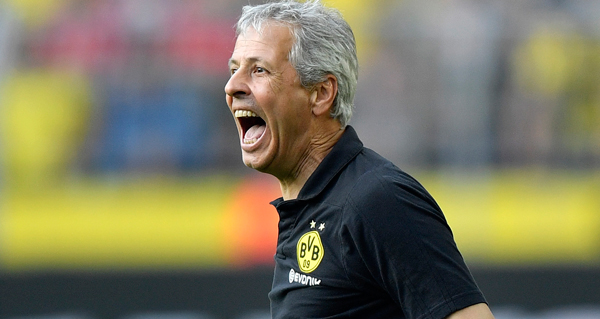For many years Italian directors shot without sound and on the sets of some spaghetti westerns, the sheriff and the outlaw weren’t speaking the same language. Fussier filmmakers might worry about the performance-impairing effects of two actors not being able to understand each other in real time, but they were cranking these things out on tight schedules. One cowboy said I’m gonna gitchu, sucker in English and the other said we’ll see about that in Italian and provided the gate was clear, everybody moved on to the next scene. It would all come out in a unified tongue when they recorded the dub. The English-speakers would look like ventriloquized fish on the Italian track and vice versa, but oh well. The basic ideas were still being communicated effectively enough, and at any rate, the dialogue wasn’t exactly being written by Bob Towne.
There’s a similar let’s-just-get-this-over-the-line vibe about the recently resumed European soccer season. Ligue 1 and the Eredivisie were effectively cancelled by the French and Dutch governments, but the Bundesliga has been back for a few weeks, and the Spaniards and Italians returned this past weekend. The EPL is set to restart this Wednesday. We’re doing this because sport is the warm plasma bath in which society restores itself, and because there is a lot of money at stake—appetites to be satisfied rather than needs to be met; everybody is already rich. Whatever cynicisms have expedited its return, soccer is here again, and it is a comfort. The great greenness of the pitch is a fine thing to lose yourself in for a couple hours. It’s far from transformative, but it is a high-quality distraction.
Of course, beyond the pitch—in a literal sense, as in: just beyond the pitch—everything belongs still to this queasy present. The assistant coaches are wearing masks and the teams don’t visit with each other in the tunnel before the game starts. The bench players are spread out in the stands rather than huddled together in the dugout. They are the vast cliffs of seating’s only occupants. There are no fans, obviously. Matches are being staged in almost entirely empty stadia, which makes for a slightly discomfiting, echo-y viewing experience. A few weeks back, in an effort to make their contests seem a little bit less like they were taking place in the abandoned monuments of a dead civilization, the Bundesliga started mixing fake noise into their broadcasts: murmurs and chants from a crowd that isn’t there.
It works as an atmospheric element. Obviously you know there are no fans, but it’s like a standee in your peripheral vision: if you’re paying close attention to something else—say, an attacking move building goalwards—you allow yourself to be tricked by it. Because it’s not as if the ghost of the crowd is impersonating a good friend; it’s approximating a bunch of people making generally pleased or upset or excited sounds. A throng of 40,000 expressing some variation of C’MON REF! is not a subtle or specific thing. You can replicate it, and although the sound engineers in charge of orchestrating this trickery aren’t perfect—reactions to close misses, for instance, are often a couple seconds late because the guy at the board clearly has one finger on the GOOOOOOOL! button—they get the point across more often than not.
This past weekend, La Liga went in for not just fake crowd noises, but fake fans in the seats. Or more precisely: a digital backdrop that suggested fans. These weren’t three-dimensional models, just some gently shifting magic eye poster painted over what would otherwise be a sea of vacant red or blue or green seats. The aesthetics of it were very Tecmo Bowl, and while not unpleasant, it doesn’t have the same effect as the piped-in sound. You are never at any point unconsciously thinking this stadium is full of people right now. It’s not meaningfully different from a tarp, and not nearly as charming as Borussia Monchengladbach sticking a bunch of cardboard cutouts behind their goal. Plus it can easily transform into a giant digital billboard for an insurance or cell phone company. Nobody needs that.
The aesthetic arguments for and against fake crowd noise and fake crowds are pretty boring. I personally would rather hear the players shouting at each other rather than generic FIFA sounds, but either one is fine. The fan-approximate blur behind the pitch is okay, but so are empty stands. What bums me out about these fabrications is that they reveal the anxieties of everyone involved in this venture. They seek to make the games feel more normal, because though the action resembles an intermittently buffering version of midseason soccer, the context in which that action takes place is noticeably strange. There’s a wrongness about it, like the parties involved asked permission, didn’t get the answer they wanted, and snuck out to kick the ball around anyway. Nothing can meliorate this feeling, except an actual return to societal normalcy, which is far beyond the powers of a soccer match to generate. This pandemic simply has to pass for the doom it trails to pass too. In the meantime, we’re content to pretend, one scandalous match at a time. This is not the best we can do, but we’re doing it all the same.



